JBL TS6000 Handleiding
Bekijk gratis de handleiding van JBL TS6000 (4 pagina’s), behorend tot de categorie Speaker. Deze gids werd als nuttig beoordeeld door 29 mensen en kreeg gemiddeld 4.7 sterren uit 15 reviews. Heb je een vraag over JBL TS6000 of wil je andere gebruikers van dit product iets vragen? Stel een vraag
Pagina 1/4

JBL
®
TS SERIES
TS60, TS600, TS6000,
TS8000
OWNER’S GUIDE

JBL®TS SERIES
For more than 60 years, JBL
®audio equipment has been chosen for top concert
halls, recording studios and movie theaters around the world, becoming the
hands-down choice of leading recording artists and sound engineers. With the
JBL TS Series, innovative technologies such as pure-titanium compression
drivers, Elliptical Oblate Spheroidal
™(EOS) waveguides and magnesium-alloy
transducer reinforcement are available to you. Enjoy!
UNPACKING THE SPEAKERS
If you suspect damage from transit, report it immediately to your dealer. Keep
the shipping carton and packing materials for future use.
INCLUDED WITH THE TS6000 AND TS8000
PLACEMENT
NEVER drag the speaker to move it, as this will damage the spikes, the
feet and/or the wood cabinet itself. Always lift the speaker and carry it to its
new location.
CAUTION: Floorstanding (tower) loudspeakers have a high center
of gravity and may become unstable and tip over during events such as
earthquakes, or if rocked, tipped or improperly positioned. If this is a concern,
these speakers should be anchored to the wall behind them, using the same
procedures and hardware customary for anchoring bookcases and wall
units. The customer is responsible for proper installation and proper selection
of hardware.
STEREO
Before deciding where to place your speakers, survey your room and think
about placement, keeping the following points in mind, using Figure 1 as
a guide:
• For best results, place the speakers 6'– 8' (1.5m–2.5m) apart.
• Position each speaker so that the tweeter is approximately at ear level.
• Generally, bass output will increase as the speaker is moved closer to a
wall or corner.
• Refer to the “Home Theater” section below if you also plan to use the
speakers for home theater reproduction.
Figure 1. Experiment with speaker placement to obtain
the best bass level and stereo imaging in your room.
HOME THEATER
For front-channel use, place one speaker on the left and another on the right,
along either side of the television monitor. Since the speakers are magnetically
shielded, you can place them near the TV without worrying about the field
distorting the TV picture.
For surround-channel use, place speakers on bookshelves or stands alongside
the listening position. Final placement depends on room acoustics, availability
of space and your listening preference (Figures 2 and 3).
In 6- or 7-channel configurations, place the rear channel(s) behind the listening
position, as shown in Figures 2 and 3.
NOTE: A JBL powered subwoofer will add impact and realism to both
music and film soundtracks. Contact your JBL dealer for recommendations
on subwoofer models for your application.
Figure 2. This overhead view shows a typical home theater plan. Left/right
rear channels are for a 7-channel system. The center rear channel is for
a 6-channel system.
Figure 3. This figure shows an alternate layout, which may be more suitable
for some rooms. Left/right rear channels are for a 7-channel system. The
center rear channel is for a 6-channel system.
INSTALLING SPIKED FEET
TS6000, TS8000
Five metal spikes are supplied for use when the speaker is to be placed on a
carpeted surface; using them decouples the speaker from the floor to prevent
unwanted damping. To insert the spikes, gently lay the speaker on its side (not
its front or back) on a soft, nonabrasive surface, and unscrew the rubber-tipped
feet (store in a safe place). Each spike then screws into the threaded insert in
each corner. Make sure all five spikes are screwed in completely for stability.
To protect the surface of uncarpeted floors, set each spike into an included
metal coaster.
NEVER drag the speaker to move it, as this will damage the spikes, the
feet, the wood cabinet itself and/or the floor. Always lift the speaker and carry it to
its new location.
Left
Surround
Channel
Right
Surround
Channel
Right Rear
Channel
Left Rear
Channel
JBL Subwoofer
(optional)
Center Rear
Channel
Right
Front
Channel
Left
Front
Channel
Center
Channel
Couch
Left
Front
Channel
Left
Surround
Channel
Left Rear
Channel
Right Rear
Channel
Center Rear
Channel
Right
Surround
Channel
Right
Front
Channel
Center
Channel
JBL Subwoofer
(optional)
Listening Position
Left
Channel
Right
Channel
Spike kit (packed in end pads)
(5) Coasters (
2

WIRING THE SYSTEM
IMPORTANT: MAKE SURE ALL EQUIPMENT IS
TURNED OFF BEFORE MAKING ANY CONNECTIONS.
For speaker connections, use a high-quality speaker wire with polarity coding.
The side of the wire with a ridge or other coding is usually considered positive
polarity (i.e., +).
NOTE: If desired, consult your local JBL dealer about speaker wire and
connection options.
The speakers have coded termi-
nals that accept a variety of wire
connectors. The most common
connection is shown in Figure 4.
To ensure proper polarity, connect
each +terminal on the back of
the amplifier or receiver to the
respective +(red) terminal on
each speaker, as shown in Figure
5. Connect the –(black) terminals
in a similar way. See the owner’s
guides that were included with
your amplifier, receiver and
television to confirm connection
procedures.
IMPORTANT: DO NOT REVERSE POLARITIES
(I.E., + TO
–
OR
–
TO +) WHEN MAKING CONNECTIONS.
DOING SO WILL CAUSE POOR IMAGING AND
DIMINISHED BASS RESPONSE.
STANDARD CONNECTION
Figure 5. Wiring diagram shows polarity connections for one channel
of a stereo or home theater system.
BI-WIRING
The outer connection panel and internal dividing network of the TS models are
designed so that separate sets of speaker cables can be attached to the low-fre-
quency transducer and midrange/high-frequency transducer portions of this divid-
ing network. This is called bi-wiring. Bi-wiring can provide several sonic advan-
tages and considerably more flexibility in power amplifier selection.
Figure 6.
SINGLE-STEREO AMPLIFIER
Figure 7.
DUAL-STEREO AMPLIFIER
Figure 8.
FINAL ADJUSTMENTS
Check the speakers for playback, first by setting the system volume control
to a minimum level, and then by applying power to your audio system. Play
a favorite music or video segment and increase the system volume control
to a comfortable level.
NOTE: You should hear balanced audio reproduction across the entire
frequency spectrum. If not, check all wiring connections or consult the
authorized JBL dealer from whom you purchased the system for more help.
The amount of bass you hear and the stereo-image quality will be affected
by a number of different factors, including the room’s size and shape, the
construction materials used to build the room, the listener’s position relative
to the speakers, and the position of the speakers in the room.
Listen to a variety of music selections and note the bass level. If there is too
much bass, move the speakers away from nearby walls. Conversely, if you
place the speakers closer to the walls, there will be more bass output.
CARE OF YOUR SPEAKER SYSTEM
Each JBL TS Series enclosure has a finish that does not require any routine
maintenance. When needed, use a soft cloth to remove any fingerprints or
dust from the enclosure or grille.
NOTE: Do not use any cleaning products or polishes on the cabinet
or grille.
Standard
Connection
Speaker Wire
3
Figure 4. This figure shows how to
connect bare wires to the terminals.
Product specificaties
| Merk: | JBL |
| Categorie: | Speaker |
| Model: | TS6000 |
Heb je hulp nodig?
Als je hulp nodig hebt met JBL TS6000 stel dan hieronder een vraag en andere gebruikers zullen je antwoorden
Handleiding Speaker JBL
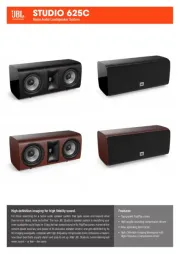
6 Augustus 2025

5 Juli 2025

5 Juli 2025
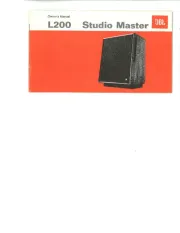
1 Juli 2025
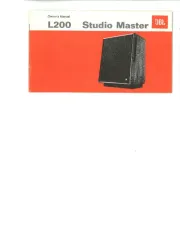
30 Juni 2025
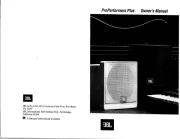
30 Juni 2025
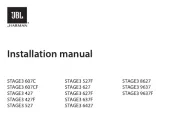
4 Juni 2025
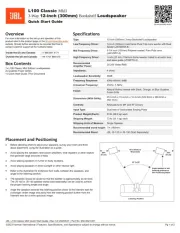
3 Juni 2025
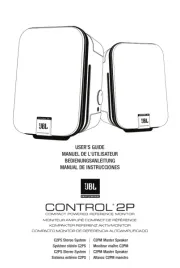
9 Mei 2025

27 April 2025
Handleiding Speaker
- Nokia
- Tosima
- ViewZ
- Kreafunk
- Oregon Scientific
- BoomTone DJ
- Q Acoustics
- Boomcore
- Worx
- TWF
- Fluance
- Sennheiser
- DAS Audio
- Klipsch
- Yamaha
Nieuwste handleidingen voor Speaker

14 September 2025

13 September 2025
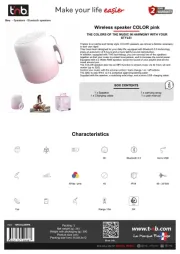
13 September 2025
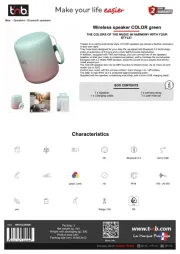
12 September 2025
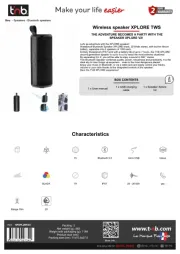
12 September 2025
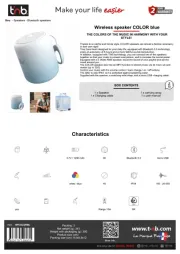
12 September 2025
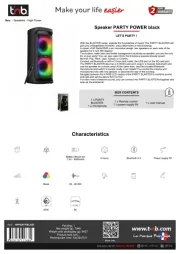
12 September 2025
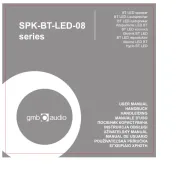
12 September 2025
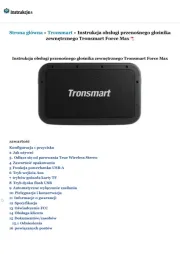
12 September 2025

12 September 2025